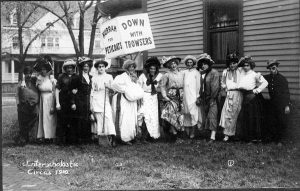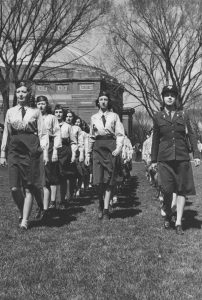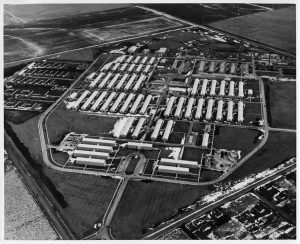1940-1949

1940
- Men’s League organized.
- Fraternities Chi Beta and Chi Psi merged.
- Last Interscholastic Circus held.
- Abbott Power Plant began service.
1941
- Illinois Central Railroad unveiled Illini passenger engine providing service between Champaign and Chicago.
- Illini Union dedicated.
- First University men’s residence hall opened.
- Longtime football coach Robert Zuppke resigned, succeeded by Ray Eliot.
- U.S. entry into World War II after Pearl Harbor greatly impacted University. Almost overnight, the ratio of men to women on campus went from 3-1 to 1-4.
1942
- Illinois enrollment ranked fourth among U.S. universities with 12,694 students.
- WILL studios moved from 400 South Wright Street to Gregory Hall.
- Navy Signal Corps established school on campus.
- The men’s basketball team “the Whiz Kids” won the Big Ten title.
- “Sweater Girl” contest banned.
- Students launched campaign to raise funds for families affected by a tornado that struck southeast of Urbana.
- Illini Union Board took over functions of Women’s League and Men’s League.

1943
- The “Whiz Kids” again won the Big Ten.
- Thousands of student-soldiers in the Army Specialized Training Corps (ASTP) and the Navy V-12 program received training on campus.
- Office of Dean of Students established.
- Idele Stith portrayed Princess Illiniwek.
1944
- Illini Veterans Club organized with 25 men.
- Board of Trustees approved the establishment of a College of Veterinary Medicine.
- Congress passed GI Bill offering a college education to millions of returning veterans.
- Former University President David Kinley died.
1945
- Willard Airport opened.
- The University set up temporary housing at Stadium Terrace and Illini Village. Over 11,000 veterans returned to Urbana-Champaign campus following the war. Of the 20,276 Illini who had served in the war, 738 were killed.
- A group of students, faculty, and townspeople formed an organization dedicated to fighting discrimination in Champaign-Urbana. The group would become known as the Student Community Interracial Committee.
- The Wesley Foundation-sponsored Wescoga women’s cooperative house admitted an African-American member.
- Both Independent and Greek student political parties included planks in their platforms condemning discrimination. The Independent student political party accepted African-Americans as members and nominated Fred Ford, an African-American, as sophomore senator. Ford would go on to win the election.
- Student Senate adopted resolution drawn up by Independent party condemning discrimination practiced by local restaurants. University Senate concurred in resolution.
1946
- Robert Allerton gave a 1,768-acre estate and 6,000 acres of farmland to the University, doubling the size of the school’s landholdings.
- Members of the Student Community Interracial Committee asked campus restauranteurs to sign statements saying they do not discriminate. Six restaurants refused to sign. Following a picketing campaign and a threatened lawsuit, these restaurants agreed to end discrimination against African-Americans.
- Galesburg campus opened to accommodate 3,000 new students.
- Navy Pier campus opened.
- George Stoddard assumed the UI presidency.
- Board of Trustees endorsed “a policy which will favor and strengthen attitudes and social philosophies which are necessary to create a community atmosphere in which racial prejudice cannot thrive.”
- Residence halls opened to African-Americans.
- Satirical magazine Shaft began publication. Gene Shalit and Hugh Hefner, among others, would serve as the magazine’s managing editor.

1947
- Illinois defeated UCLA in the Rose Bowl, 45-14.
- Panhellenic Council unanimously voted to admit African-American sorority as member.
- Local theater managers agreed to end discriminatory practices against African-Americans following a Student Community Interracial Committee campaign.
- Block I employed colored cards and performed complex maneuvers for the first time. Block I membership increased to 1,100.
- Illinois Legislature passed Clabaugh Act prohibiting any UI official from extending university facilities “to any subversive, seditious, and un-American organization, or to its representatives.”
1948
- The University developed a college program for physically disabled students. The Galesburg wheelchair basketball team was one of the the first collegiate teams of its kind.
- Student Community Interracial Committee helped desegregate washroom facilities for Illini Union employees. Group also protested minstrel show sponsored by the Newman Club.
- First Festival of Contemporary Arts held.
- First Illini football game televised.

1949
- Campaign to ban campus minstrel shows began. Student Senate passed resolution advising “that in the future the committee on student affairs should disapprove of shows which placed minority groups in an unfavorable light.” Committee on Student Affairs rejected this resolution.
- Illini men’s basketball team won Big Ten, finished in third place in the NCAA Tournament.
- Student Community Interracial Committee sponsored “Negro History Week.”
- A new broadwalk, named the Carr walk, opened along the east side of the Quad.
- The Galesburg campus closed.
- Lincoln Avenue Residence Hall completed.
- Electrical Engineering Building (Everitt Lab) dedicated.
- Illi-Dell cooperative fraternity established.
Return to 1930-1939 | Continue to 1950-1959